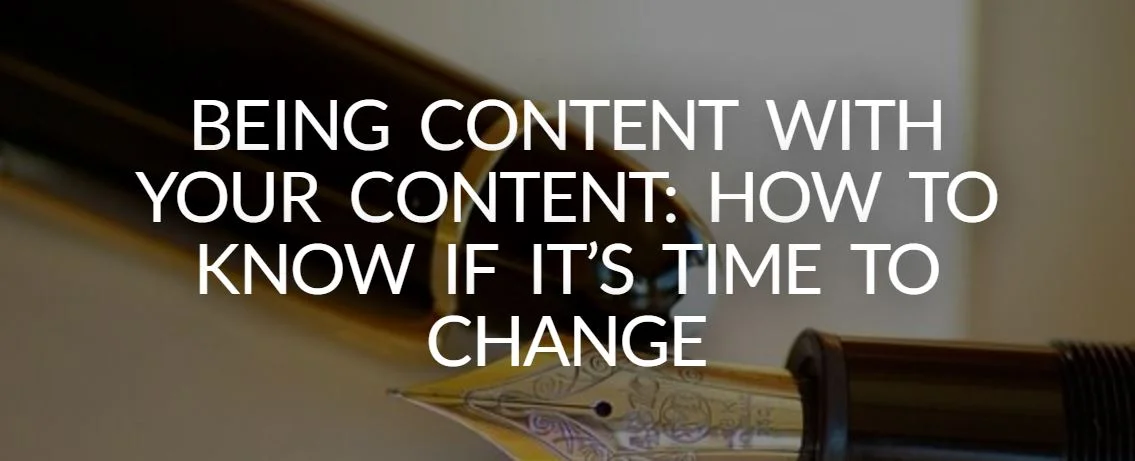Several years ago, I penned a song entitled “Content” [kuh n-tent] that was all about being satisfied. Everyone pronounced it “content” [kon-tent] and thought it was a placeholder for the actual title. It’s a little ironic actually. Is a musician every content with his or her pieces? Marketers, too, often find themselves asking this question often: am I content with my content?
Author and historian, A. Wyatt Tilby, first used the expression “content is king” in 1914. However, he wasn’t referring to copy, video or audio, but rather to being satisfied. We think of this as a positive thing today, but Tilby spoke of the British monarchy when content was a derivative of “constrained” or “contained.” So, for a royal, their content audience was captive. Literally.
So, how do you keep your audience’s captive attention? By taking innovative and fresh approaches that keep readers informed, entertained and empowered to do more in their daily lives. Here are five ways to know if you can be content with your content or if it is time to change:
1. You are excited for others to read it
This may seem obvious but if the content doesn’t excite you – as the subject matter expert – it isn’t the right approach or needs more work. No matter your profession, we are all called to write and persuade or inform others from time to time – be it a manager, coworker, customer, patient or client. For some, writing is all they do in their jobs, and it comes naturally. For others, it’s a dreaded task. The key is to find opportunities to write about subjects that excite you. When you do, it becomes easier to create content with which you can be content. You may need to stretch the boundaries of your writing comfort zone, and research for supporting sources. But in doing so, the content will be strengthened and ultimately, professional expertise will be heightened. Now, if that isn’t exciting, I don’t know what is.
The key is to find opportunities to write about subjects that excite you.
2. Ask a trusted, skeptical colleague to review
Before you hit “go live” on any piece of content, seek out your most trusted, skeptical colleague to give it a thorough review. He or she needn’t be an expert in the topic of the piece, but you do want their unbiased and honest opinion about the aesthetics, clarity, and audience-perceived value of your content. Does the headline grab the reader and pull them in? Is it true to the “meat” of the piece or is it simply click bait? The latter, while a heavily used tactic these days, can damage your credibility with your audience. Take in all feedback and make adjustments to your content to ensure your audience has the utmost opportunity to engage with, and derive meaningful takeaways.
3. The content has been active for more than three months
Now, let’s talk about the “lifespan” of an effective piece of content. Once you have your ad, whitepaper, blog or video “in the wild,” and your audiences are consuming it, you’ll want to consider how long to promote it. The duration may vary according to the traffic it gets and the resonance of its message with the intended audience. If the piece – whether being promoted via paid venues, or lives organically on your website – has been running for three months or more (or you can’t remember when it was changed), it is probably time for an update. The best way to remain content with your content is to ensure your audience doesn’t have a chance to get bored.
4. It has been seen by your core customers more than seven times
Closely tied to recommended lifespan of your content is the marketing “Rule of Seven,” which states that audiences need to see your content seven times to remember and/or take action on it. If the content is compelling, it can make an impact sooner than seven times. If the content is run-of-the-mill, it can be seen more before becoming redundant. If you’ve used the content in your rotation at least seven times, it’s a good practice to change the content before it becomes too familiar and easily tuned out.
5. The Call to Action is no longer effective
“Call to Action” (CTA) defines the desired behavior of the viewer: buy the product, watch this movie, or shop this store. Although it can be difficult, it is important to measure the results of your content based on your CTA. Pay attention to the messages your audiences are sending to you via the CTA: e.g., are they opening your emails; are they clicking the links; are they visiting your page to learn more; are they sharing or commenting on your content? These are all important indicators of message and content resonance. Monitoring the results of your CTA helps you understand if your CTA is compelling enough, or perhaps it is time to refresh the content.
This article was originally posted on Leaders In Heels.








































